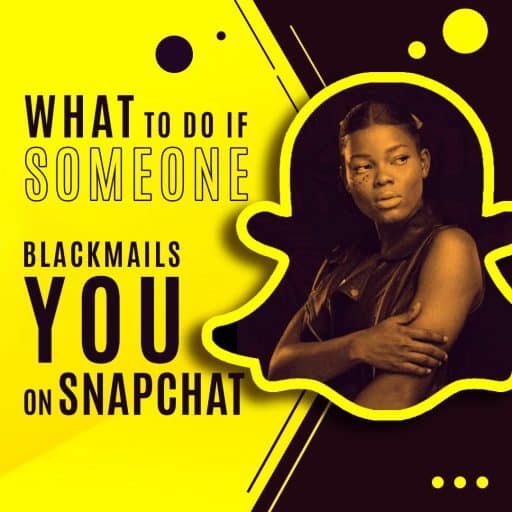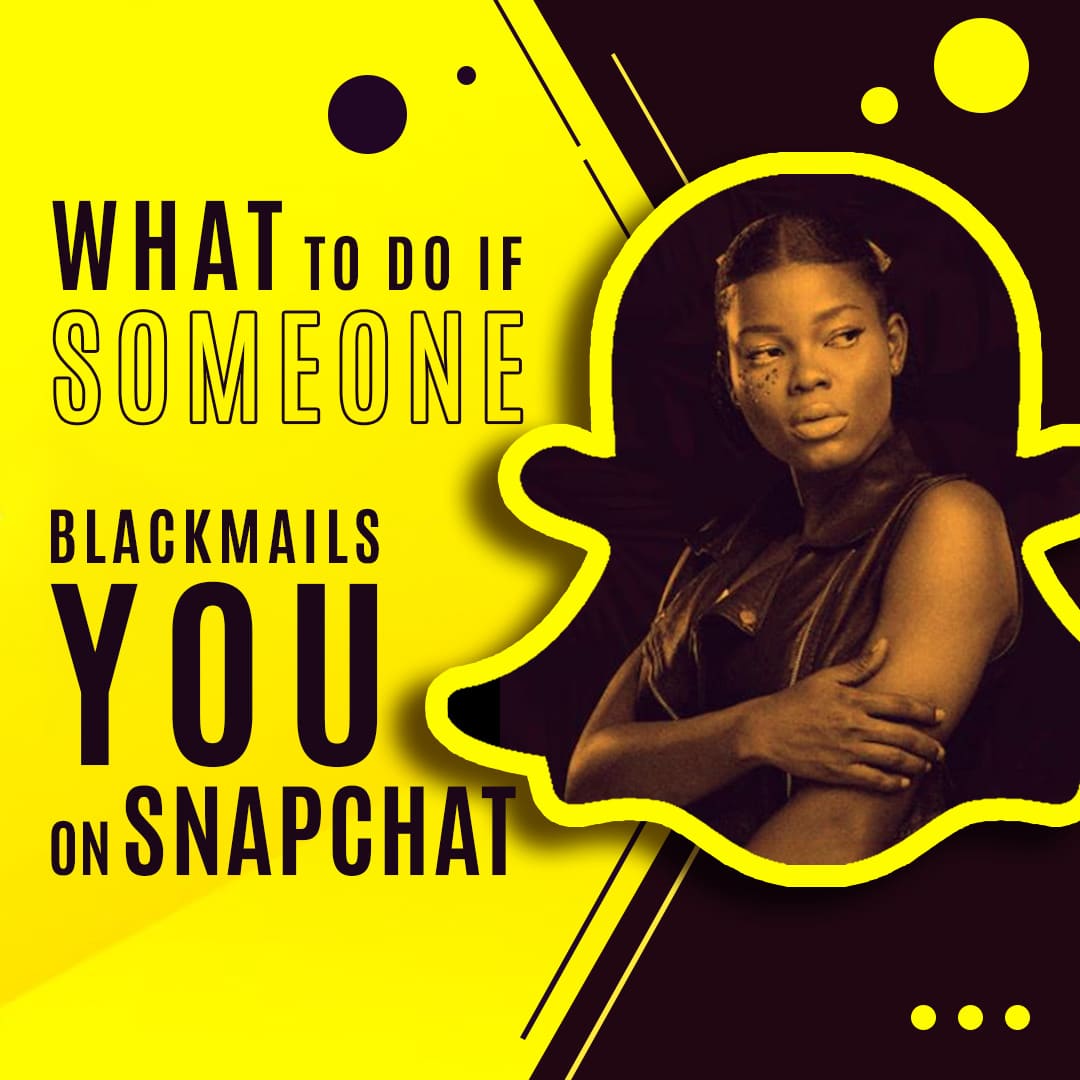In the age of digital connection, social media platforms like Snapchat have made it easy for friends, family, and even strangers to share photos, videos, and messages. However, Snapchat blackmail has become an increasing threat, with scammers exploiting the platform to manipulate users.
With over 800 million monthly active users (MAUs) as of November 2024 (1), Snapchat stands as the ninth largest social media platform. But, while Snapchat’s user base continues to grow, it relies on its users to police themselves and report when incidents cybercrime occur.
Snapchat extortion scams are on the rise, with criminals targeting individuals through dating and sextortion scams, causing both emotional and financial distress.
If you have been targeted by a cybercriminal on Snapchat, it is crucial that you take immediate action. While it may feel like this blackmail is threatening your life and reputation, you still have ways to fight back. Not only can you report the blackmailer to Snapchat administrators, but there are direct steps you can take right now to put a stop to their blackmail scam and regain control.
What is Snapchat Blackmail?
Snapchat Blackmail is when a cybercriminal uses a fake account to connect with an unsuspecting victim in an effort to obtain some type of incriminating information or content that they can use to blackmail the victim. The most common Snapchat blackmail scam reported to Digital Forensics Corp. is sextortion, a type of blackmail where a scammer creates a relationship with a target using flirtation and manipulation until they are able to gain intimate content or “nudes” of their target to use as leverage for their extortion scam.
While there are other types of scams including romance scams or malware scams, sextortion is the most prevalent cyber crime on the Snapchat application.
Video Resource: What to Do If Someone is Blackmailing You On Snapchat.
How Snapchat Sextortion Works
Sextortion on Snapchat typically begins with a scammer creating a fake profile. These fraudulent accounts often feature a profile picture of an attractive person or even a celebrity, which the blackmailer uses to lure their targets into accepting the initial friend request.
During a Snapchat sextortion scam, the blackmailer will lure a victim into sharing intimate images or videos with them secretly capturing the shared images which they can later use. The blackmailer will then threaten to release the images to the victim’s family, friends, or co-workers. Capitalizing on the fear of exposure, the blackmailer will promise to delete or keep the content private if the victim agrees to pay them. This begins a twisted cycle of extortion where the blackmailer continues to send threatening messages to the victim in the hopes of extorting more money every month, week, or day.
For those unlucky enough to accept the request from the unknown/fake account, the blackmailer will begin a string of tailored messages to them. These messages usually start slowly but often accelerate as the scammer deploys the following format to achieve their initial goal.
The 4 Stages of a Snapchat Sextortion Scam.
- The Compliment Stage: In this part of the scam, the blackmailer tries to build trust with their victim by complimenting the victim’s photos, videos, or profile. They use these tactics to get the target to accept their request to connect and then to create a sense of trust.
- The Romance Stage: For those targets that respond to the messages in the previous state, the scammer will begin sending tailored messages that are meant to create romantic feelings with their targets. This action often involves sending multiple romantic messages in a role, often referred to as “Love Bombing.” But while sending these messages, the blackmailer is also researching their victim’s profile building the lists of followers, family members, and other acquaintances that will be used during the final stage.
- The Explicit Stage: Once the blackmailer has gotten their victim to develop romantic feeling toward their fake profile, they will begin asking for the victim to share explicit content with them. Often sending their own fake images to entice the victim and make them feel more comfortable. The blackmailer may even provide their victim with other ways in which to send these images or videos that is off the Snapchat platform. Regardless of where the images are sent, it is when those images are sent that the final stage begins.
- The Demand Stage: This is when the blackmailer reveals their real intentions. They then demand that their victim pays them through crypto currency or other digital payment platform. To ensure compliance with their demands, the blackmailer uses the information they gathered during the second stage and advise the victim that if they do not pay, they will send the content to the victim’s contacts. Even if the victim pays the blackmailer, the blackmailer will often continue to send demands hoping to extort more and more money from their victim.
While the process outlined above appears simple, it is an effective tactic that is used to extort thousands of individuals each year according to the FBI’s Internet Crime Complaint Center’s 2023 report (2).
If you’d like additional information on how blackmailers use the Snapchat App please see our free resource “Protect Yourself From Snapchat Nude Scams.”
Why Do Blackmailers Choose Snapchat?
Individual blackmailers and international cybercrime rings see Snapchat as a prime app to conduct their schemes for many reasons, including:
- A lack of requirements when creating an account creates increased anonymity for the blackmailer.
- Snapchat provides quick ways to send messages, videos, photos
- Blackmailers can screenshot or screen record photos or videos their victims share
- Criminals can gain additional information, including contact information from their victim’s profile.
Potential blackmailers use these factors to not only fuel their fear-mongering tactics, but to protect their anonymity and thus evade detection and capture by legal authorities.
What To Do If Someone is Blackmailing You on Snapchat or another Photo App.
If you have fallen victim to any blackmail or extortion scam on the Snapchat app, here are some simple steps you can take to protect yourself from a blackmailer and keep them at bay until you are able to receive assistance from law enforcement and other cyber-crime specialists.
- Document every interaction you have had with your harasser; this includes photos, videos, messages, call logs, etc.
- Find a support system in loved ones like family members and close friends; victims of blackmail need all the support they can get.
- Cease contact with your blackmailer and do not give into their demands for payment. Paying a blackmailer often entices these criminals into increasing their harassment to extort more money from their victims.
- Lock down your online presence, which includes your securing your Snapchat account, all your social media accounts, bank accounts, business platforms, email, etc.
- Seek out help from your local authorities, the FBI, and blackmail specialists and make a report.
If you are currently being threatened with online blackmail, it is important to reach out for help. We have a Blackmail Helpline available for victims to seek guidance on how to actively resist the demands of your blackmailer. Additionally, you should report the incident to authorities.
Do Snapchat Blackmailers Follow Through?
While it is not advantageous for a blackmailer to follow through with their threats of exposing your personal information to your contacts on Snapchat, it is important to remember that ignoring the threat will not a strategy to stop the blackmail. In a 2023 study conducted by Digital Forensics Corp., it was found that 42% of blackmailers did follow through with some type of content posting even if they had been paid. While your blackmailer may hesitate to act, you must take the threat seriously and take the appropriate steps to protect yourself reputation. If you’d like assistance with understanding your options, our team of digital forensics experts are available 24/7 to at our blackmail helpline.
Does Snapchat Offer Support for Victims of Snapchat Blackmail Scams?
Snapchat’s community guidelines (3) strictly forbid the use of the app to distribute any content which can be considered Pornographic and condemns in the strongest terms any content that exploits children. However, these current policies rely on their users to report when any content that is inconsistent with these community guidelines, rather than installing tools that prevent the sharing of suspected images featuring nudity.
As of June, 2024, Snapchat released system protections (4) which were focuses on protecting minors. These protections specifically focus on the inability of non-friends to send friend requests to minors to prevent the targeting of children for sextortion scams.
As a result, scammers are still able to use the application to entice users to share intimate content with potential blackmailers.
Where Should You Report Snapchat Blackmail?
If you find yourself a victim of blackmail on Snapchat, it is crucial to report the incident to the right channels. This will help protect you from further exploitation and help bring your perpetrator to justice. Here is a brief overview of the three steps you should take when reporting any type of extortion on Snapchat.
Report The Blackmail to These 3 Organizations:
- Report the Blackmail to Snapchat Administrators: Snapchat provides an in-app feature for reporting harassment, blackmail, and suspicious behavior. For a list of steps and common questions for report blackmail on the Snapchat App read this guide: How to Report Blackmail on Snapchat.
- Contact Local Law Enforcement: While reporting the blackmail you are experiencing on Snapchat may not yield an immediate result, it is an essential step to stay safe.
- Contact A Cyber Security Firm: Cyber security firms specialize in helping victims recover from sextortion and other forms of digital blackmail. There goal is to stop cybercriminals by tracking their locations and identifying the tools they use and leverage this information to stop blackmailers. If you’d like more information on this process, reach out to our Digital Blackmail Helpline.
For Additional Resources For Victims of Online Blackmail Click Here.
How Digital Forensics Helps Victims Stop Snapchat Blackmail
At Digital Forensics Corp. we work on behalf of our customers to ensure that their blackmailers do not win. Through our dedicated teams of digital forensics engineers and social engineering experts we work to ensure our customers issues with blackmail cease.
We do this by deploying our advanced systems to uncover your blackmailer’s identity, and location to force them to delete the images or videos they have gathered on you. We also deploy additional services to remove the threat of them releasing your content protecting your reputation and preserving your peace of mind.
If you or someone you love is facing issues with blackmail or sextortion, please contact our Sextortion Helpline for immediate assistance 24/7. You do not have to go through this alone, help is available.
Sources:
- Snapchat reported MAUs users: https://newsroom.snap.com/
- Federal Bureau of Investigations Internet Crime Complaint Center Report_-2023 (IC3): https://www.ic3.gov/AnnualReport/Reports/2023_IC3Report.pdf
- Snapchat Community Guidelines Regarding Sexual Content: https://values.snap.com/privacy/transparency/community-guidelines/sexual-content?lang=en-US
- Snapchat Launches New Features to Combat Teen Sextortion in 2025: https://abc7ny.com/post/snapchat-is-rolling-new-safety-tools-aimed-protecting/15000838/
DISCLAIMER: THIS POST IS FOR INFORMATIONAL PURPOSES ONLY AND IS NOT TO BE CONSIDERED LEGAL ADVICE ON ANY SUBJECT MATTER. DIGITAL FORENSICS CORP. IS NOT A LAWFIRM AND DOES NOT PROVIDE LEGAL ADVICE OR SERVICES. By viewing posts, the reader understands there is no attorney-client relationship, the post should not be used as a substitute for legal advice from a licensed professional attorney, and readers are urged to consult their own legal counsel on any specific legal questions concerning a specific situation.








